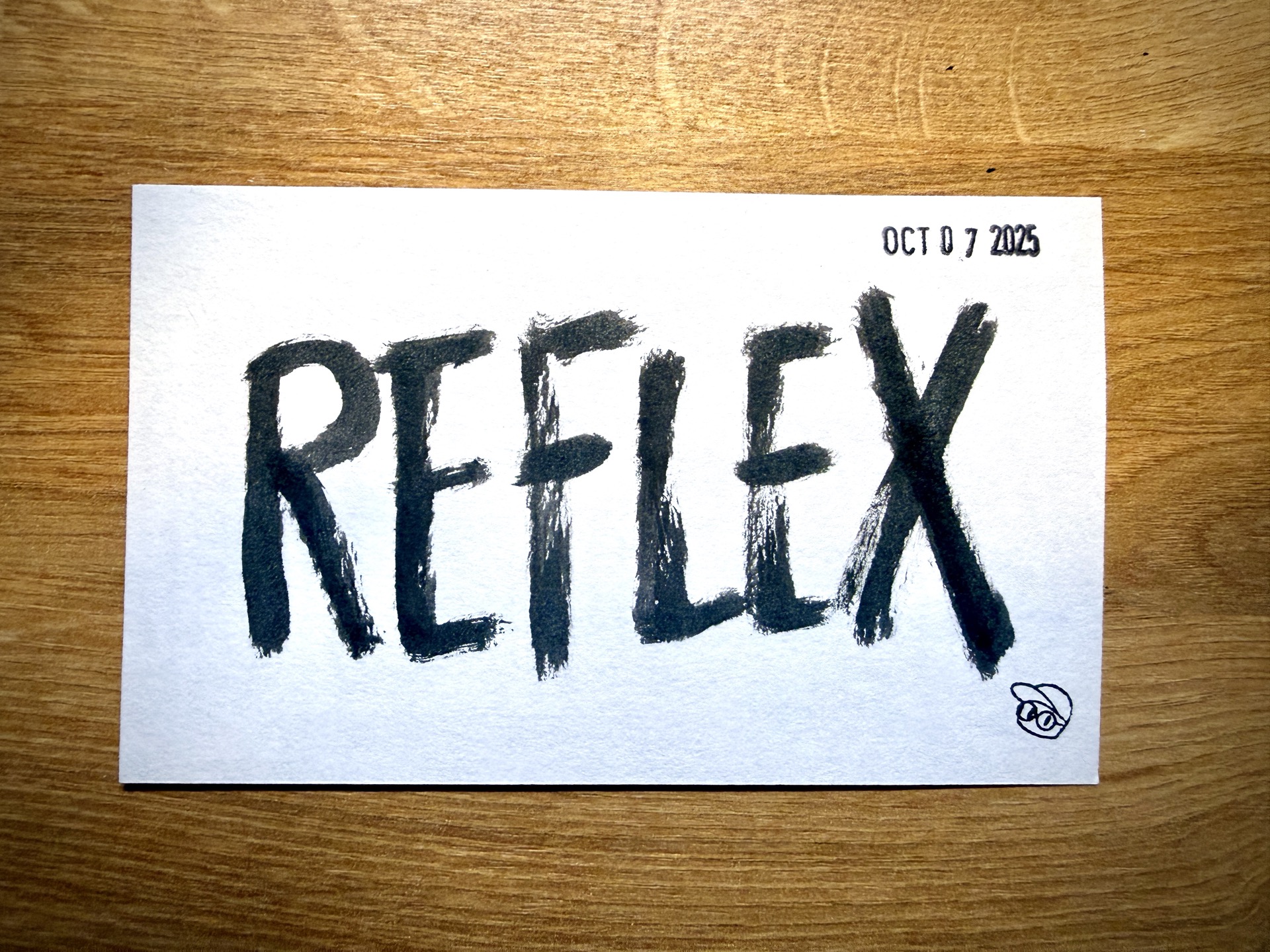We all do it. We all have our own reflexes.
Not the kind where a doctor taps your knee to see if you’ll kick, but the kind that kicks in on its own — the small, silent shortcuts of everyday life.
It’s that instinctual move you make to solve a problem — quick, thoughtless, convenient. A tiny shortcut built from habit and muscle memory.
It’s asking someone else what the weather is, even though the magical glass rectangle in your pocket can tell you after a face-unlock and two taps. It’s asking a coworker how to fix a local development issue that already has its own guide in the “Troubleshooting Local Development” doc… somewhere. It’s every Reddit post where the top comment is, “Don’t you know how to use Google?” or something to that effect.
Friction
These are subtle, almost invisible reactions to friction — the body’s way of dodging small annoyances before the mind even catches up.
I try to pay attention to them. As much as possible. And of course, I try to catch myself whenever I reflex before realizing it.
Little things. Always little things. Opening the wrong cupboard door for the 20th time. Putting a pen away near its home instead of in it. Hanging shirts in the wrong order. Again.
And when I notice these things, if I’m feeling especially curious (or slightly obsessive), I fix them. Label the cupboard door. Create a box for the pen. Make a tiny label for the shirts (black, grey, sand, orange, yellow). Not because I’m chasing perfection, but because I’m curious about what my own habits are trying to tell me. Every misplaced pen and mislabeled cupboard feels like a breadcrumb from my own brain — pointing me toward the places that still need attention, refinement, or care.
Noticing
Paying attention to reflexes does two things for me.
First, it trains awareness — once you start noticing, you can’t stop. (A blessing and a curse.)
Second, it gives you a map of friction. Every reflex points to some tiny inefficiency waiting to be refined.
One of my favorite examples shows up when I’m pairing with someone. Watching their screen as they poke around, click, type, build. Yes, I’m paying attention to the work — the designs, the code, the logic. But I’m also watching how they move. How they navigate their editor. What commands they run in the terminal. How they select rectangles in Figma. The quiet reflexes that show where the friction lives.
When I spot something curious, I’ll ask them to pause. “Why do you do it that way?”
Sometimes they shrug: “I’m not sure.” Sometimes they say, “Because the thing I want doesn’t work, so I have to.”
That’s the moment to dig in. Maybe I can tweak the library so they don’t need the workaround. Maybe their editor’s missing a config that’s forcing five clicks instead of one. Maybe there’s a shortcut they never knew existed.
Sometimes fixing a reflex changes nothing. But sometimes it changes everything.
Notice, and then decide. Will you do something about it? Or let it slide… this time. And the next.
Maybe you can automate around a problem. You can script the annoyance away. You can even decorate it with a shortcut or a habit so you stop feeling it. But every time you do, you trade awareness for tolerance.
And if you do it long enough, that tolerance becomes identity. It becomes another example of, “Welp. That’s just how things work around here!”
Refine
Because every reflex is a tiny mirror — showing us where the friction hides, and how we’ve quietly adapted to survive it.
It doesn’t have to be a big effort. It doesn’t need to be a capital-“T” Thing. You don’t need to ask “What went wrong?” in some super-scheduled post-mortem when you’ve already caught what’s quietly drifting sideways in real time.
It’s not always about fixing the habit. Sometimes it’s about finding yourself in it — seeing the small patterns that reveal who you are, and how you move through the world.
It’s less about control. More about curiosity.
It’s attention that says:
“This part of my world deserves care.”
“This motion, this system, this moment — it’s worth refining.”
When we pay attention long enough, we get the chance to refine the world — to sand the edges, smooth the sticking points, and make it work a little more like we wish it did, for ourselves and for others.
And maybe that’s the whole point. It’s not about fixing everything. It’s about staying curious long enough to see what needs refining.
